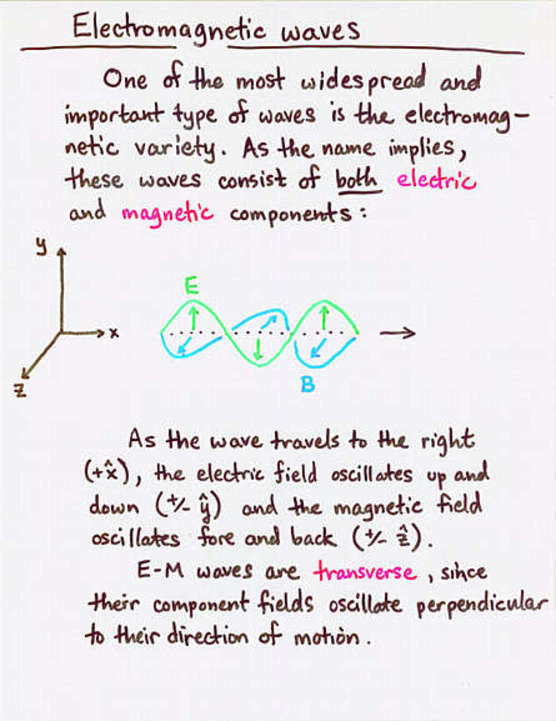 Viewgraph 1
Viewgraph 1
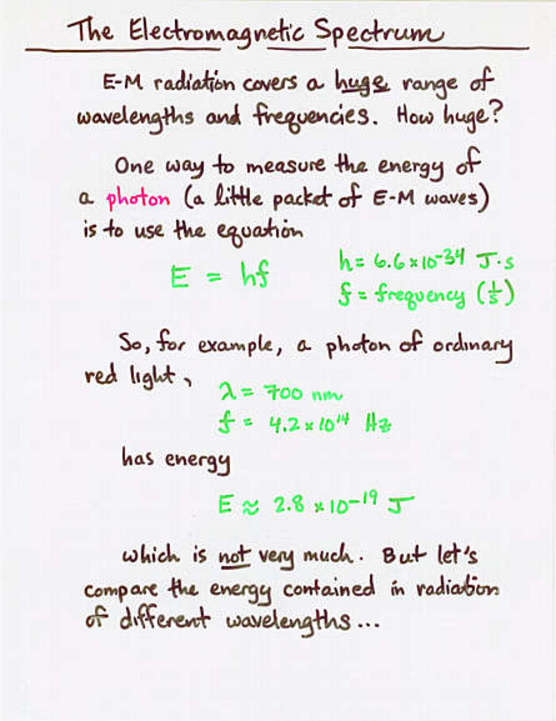 Viewgraph 2
Viewgraph 2
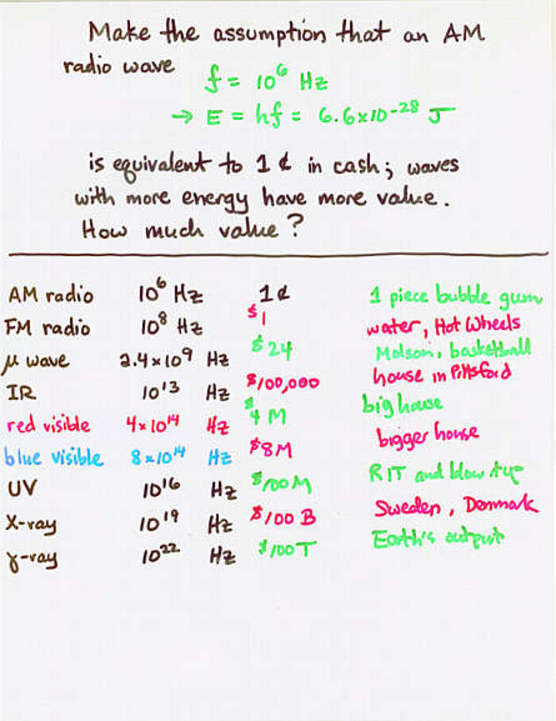 Viewgraph 3
Viewgraph 3
Another way to show the huge span of the electromagnetic spectrum is to compare it to ... a piano.
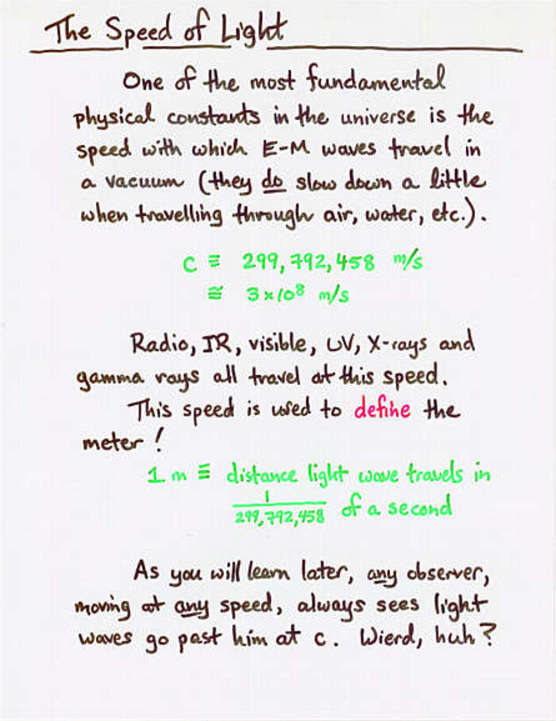 Viewgraph 4
Viewgraph 4
Joe (in Rochester) calls his friend Phillipe, who lives in Paris. As they talk, Joe notices something wierd -- there's always a short pause before Phillipe answers his questions.
"Are you playing some stupid video game?" he asks in an irritated tone of voice.
"Non," replies Phillipe after a pause of 0.48 seconds, "these delays are due simply to the speed of light."
Q: What does Phillipe mean?
Q: Roughly how far above the surface of
the Earth are communications satellites?
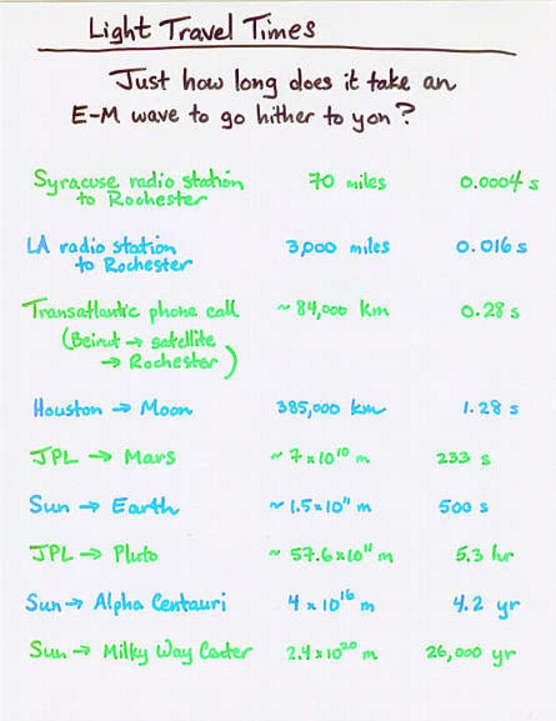 Viewgraph 5
Viewgraph 5
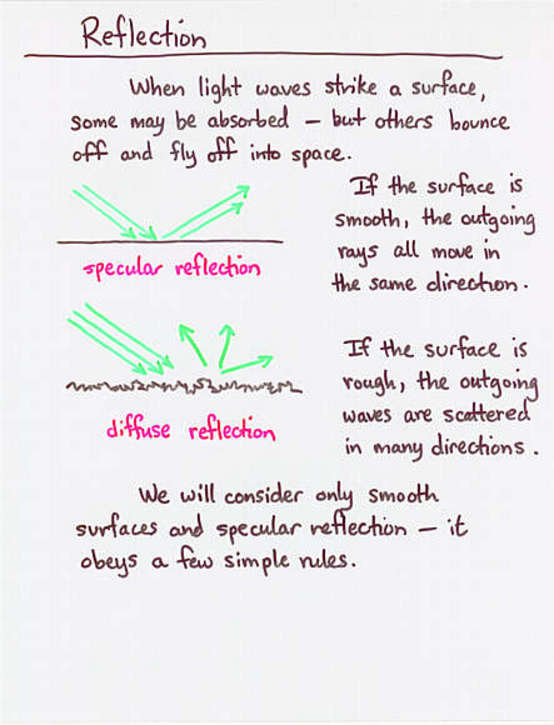 Viewgraph 6
Viewgraph 6
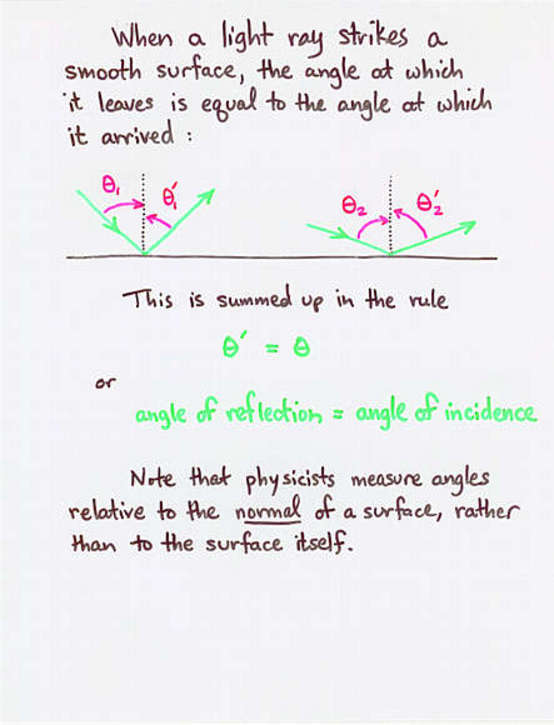 Viewgraph 7
Viewgraph 7
Let's watch some reflection in action
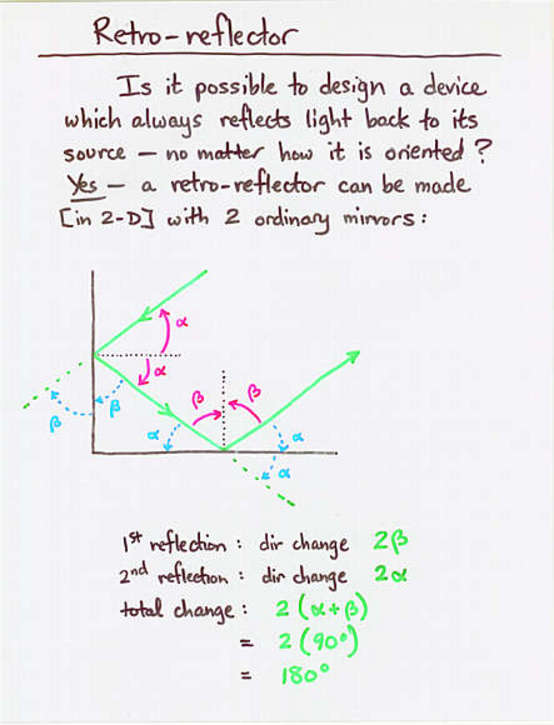 Viewgraph 8
Viewgraph 8
- Lunar ranging experiments use corner-cube reflectors
- Pictures of the APOLLO experiment at Apache Point Observatory
- Results from the lunar ranging work at Apache Point Observatory
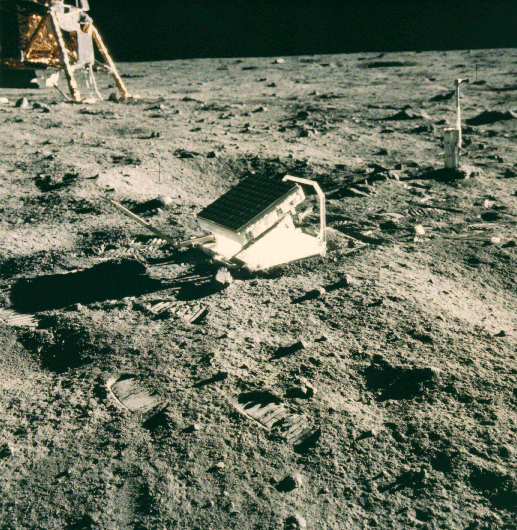
Q: What was the average distance between Earth
and Moon during the given experiment?
Q: By how much did this distance change during
the roughly 4 minutes of the experiment?
Q: Most of this change was due to the rotation
of the Earth. Which way was the telescope
pointing during the experiment?
East South West
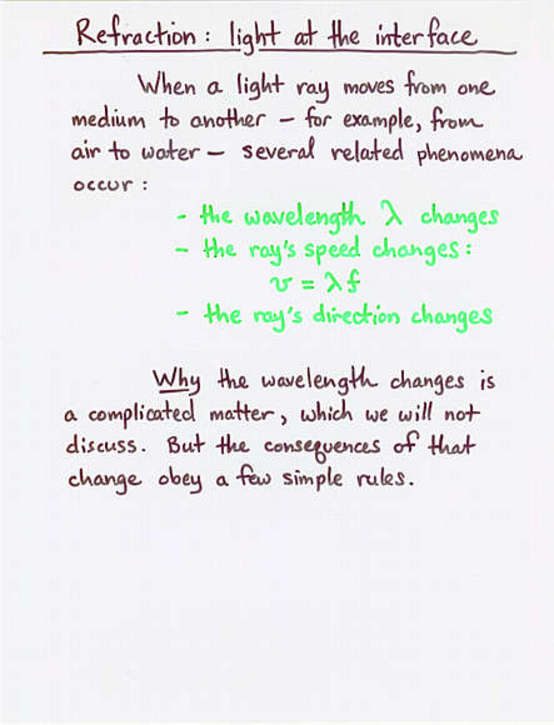 Viewgraph 9
Viewgraph 9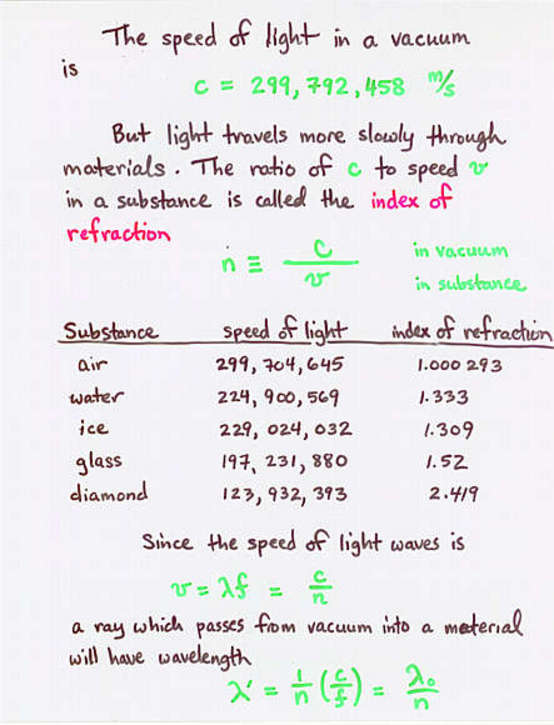 Viewgraph 10
Viewgraph 10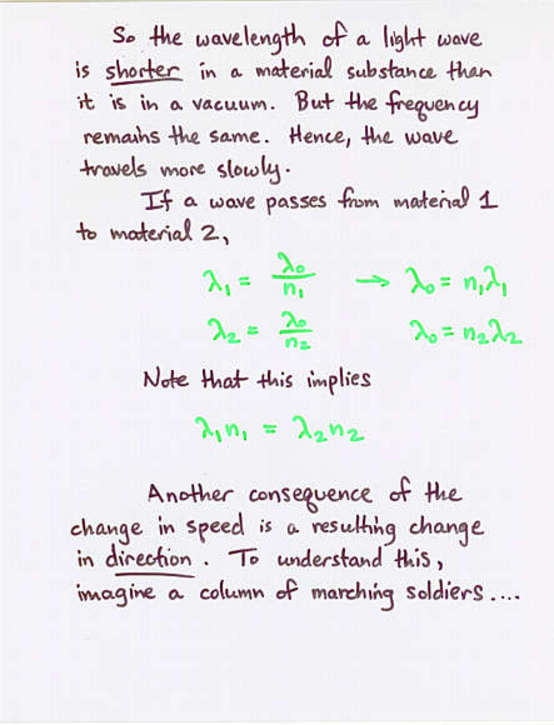 Viewgraph 11
Viewgraph 11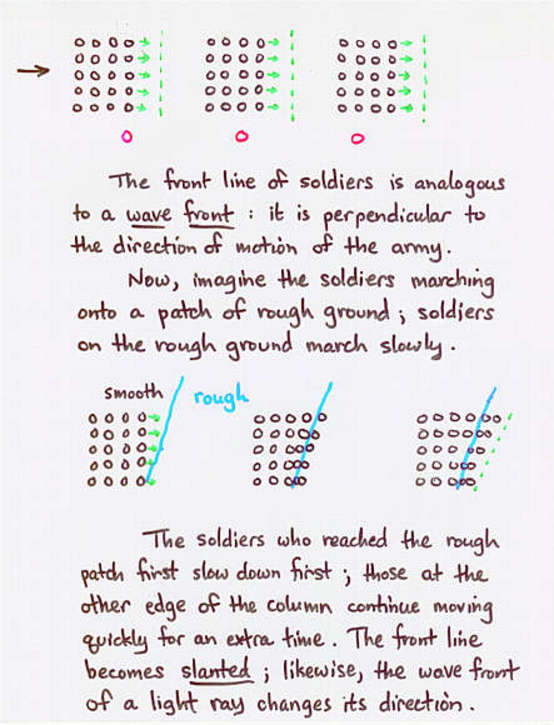 Viewgraph 12
Viewgraph 12

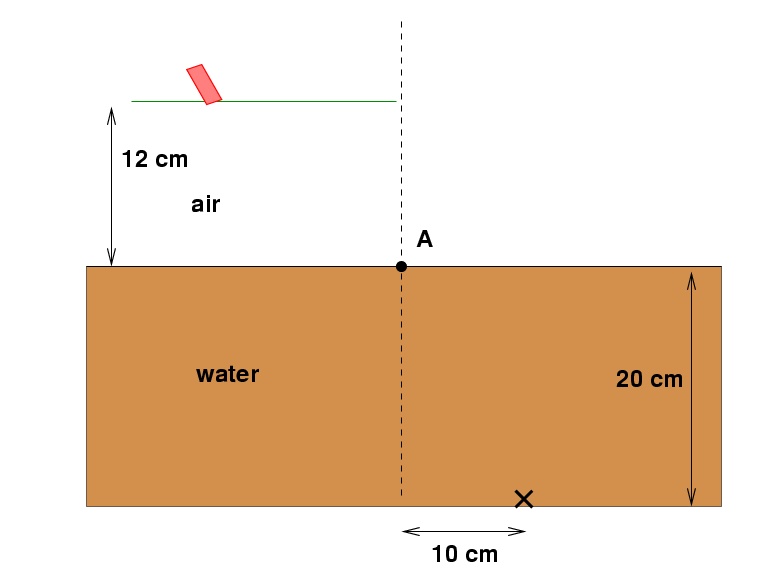
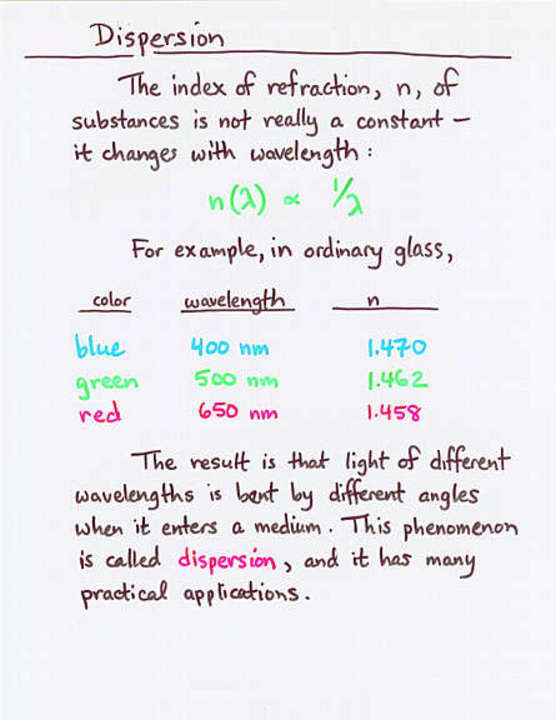 Viewgraph 14
Viewgraph 14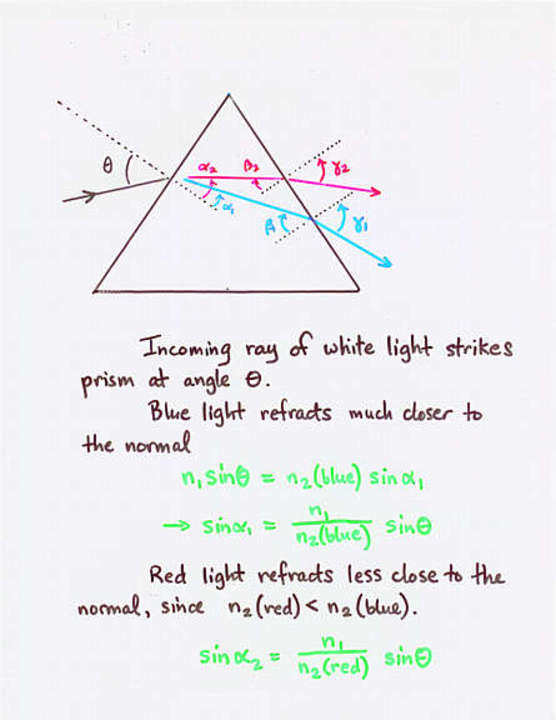 Viewgraph 15
Viewgraph 15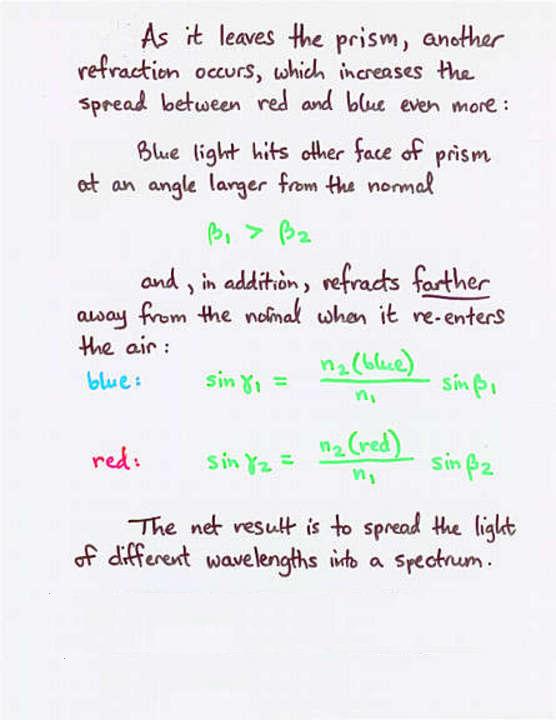 Viewgraph 16
Viewgraph 16
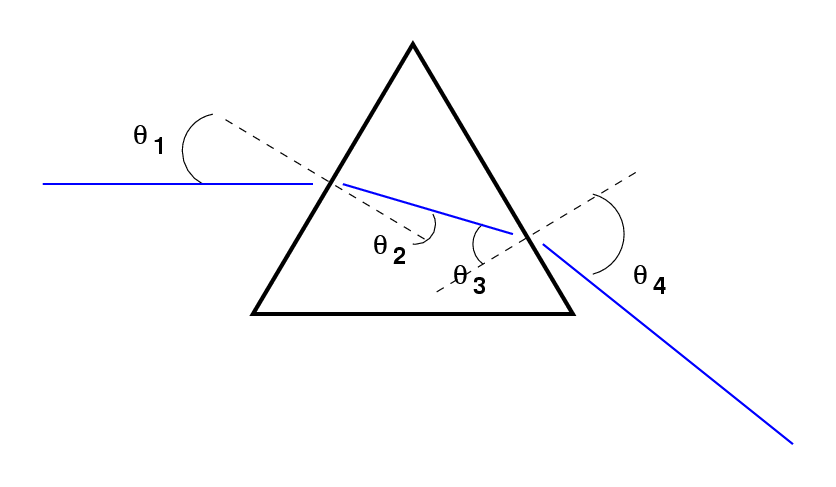
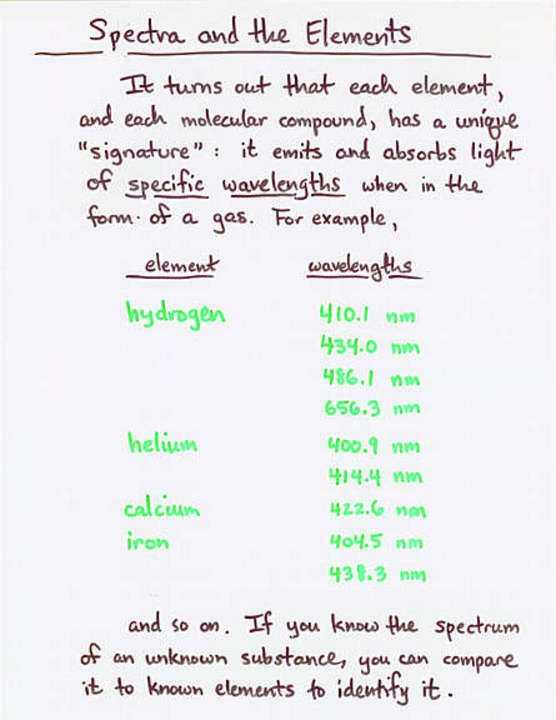 Viewgraph 17
Viewgraph 17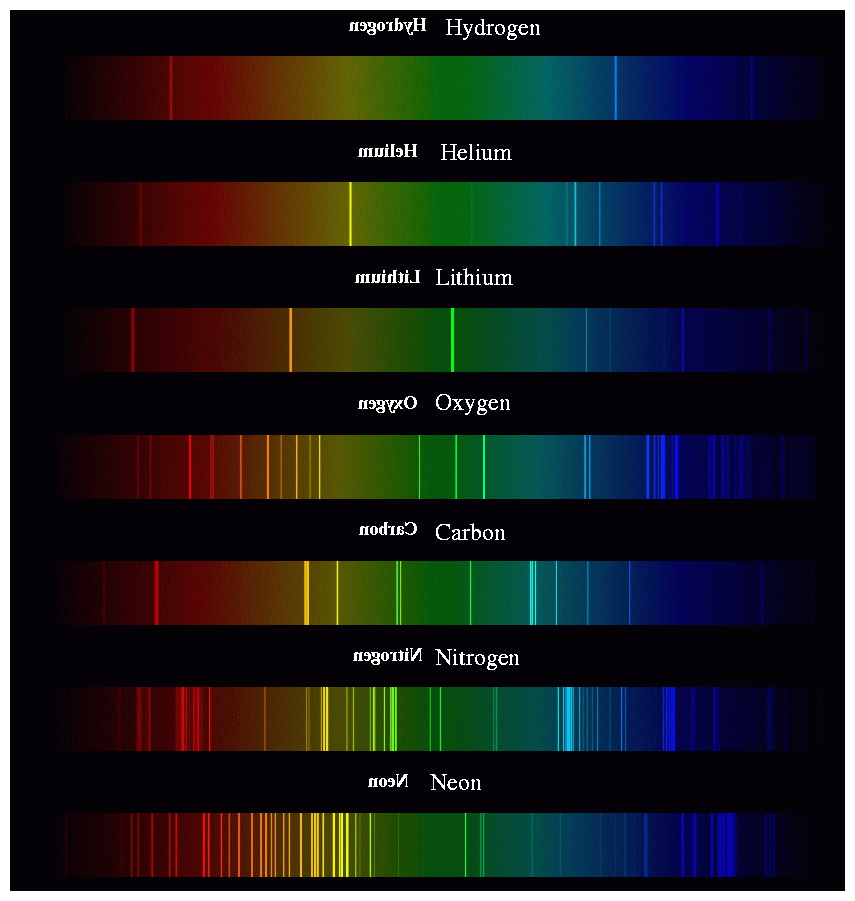
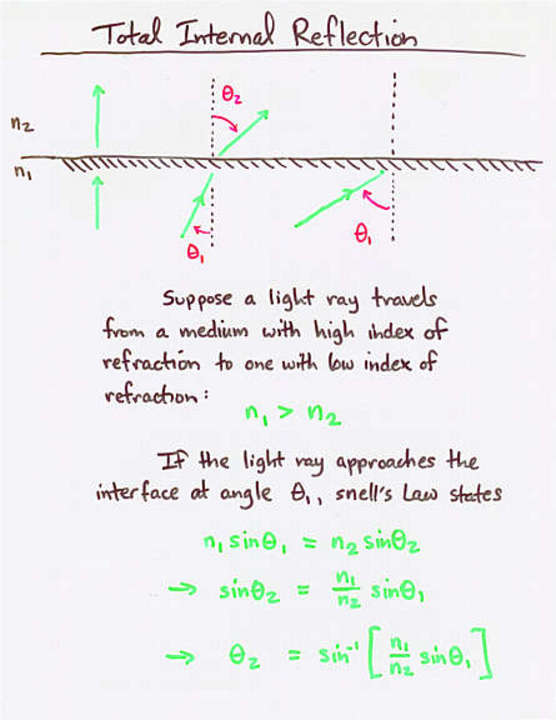 Viewgraph 18
Viewgraph 18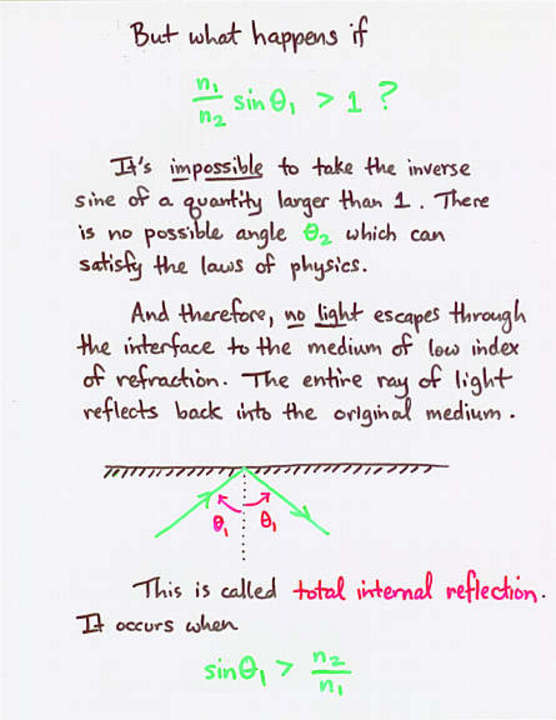 Viewgraph 19
Viewgraph 19